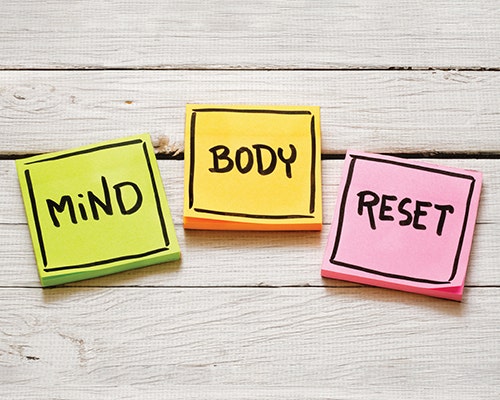How to Create a Daily Routine that Aligns with Your Health Goals
- 12/8/23


Setting health goals is a great exercise, but it’s easy to become distracted. All you have to do is look around to notice all the different directions we’re pulled in on a daily basis. Between personal and professional demands, it can be difficult to stay the course.
The key to a fulfilling, healthy lifestyle lies in prioritizing your self-care and embracing a new routine that will keep you in alignment with your goals. Embracing a healthy routine is key to nurturing your physical and mental health through exercise, nutrition, and mindfulness habits.
In this article, we’re laying the groundwork for starting a new health routine. It’s time to get out of your own way and pursue a new path toward improved wellness.
Designing Your Wellness Routine
Once you have your specific and measurable health and wellness goals in place, it’s time to map out the daily habits that are going to help you achieve them. This starts the moment you wake up in the morning and continues until you lay back down for bed at night.
This doesn’t mean you should be obsessing about your health goals all day long. However, you should have them at the forefront of your mind as you make decisions about what you’re eating, how you’re moving your body, how to respond to stressors, and how you’re talking to yourself throughout the day.
Creating a Daily Schedule
In order to create a daily schedule that becomes second nature, it’s a good idea to write it all out. First, reflect on what your current daily routine looks like and identify areas where you can incorporate changes that align with your goals.
For example, when you get up in the morning, perhaps you want to start your day by drinking a glass of water, stretching your muscles, practicing 5 minutes of silent meditation, and taking a gummy multivitamin or Dr. Formulated Once Daily Women's Probiotic.
Taking into account your personal and professional responsibilities, carve out some realistic times that can be consistently allocated to moving your body. Aim to include intentional exercise most days of the week. The type of exercise (e.g., a group fitness class, stretching, strength training at the gym, or going for a jog) should align with your long-term goals.
In regards to your nutrition, it can be helpful to do as much planning and prep as you can beforehand. For instance, carve out two hours on a Sunday to plan the menu for the week and do some prep work, like cooking a pot of rice, preparing a homemade sauce, or chopping veggies to snack on. Then, you already know what you’ll be eating for the most part, which reduces last-minute stress at mealtime.
Having a nighttime routine is also important as you wind down from the day. If improving your sleep is on your goal list, this is the time to implement behaviors that support better rest. For instance, putting away screens an hour or two before bed, creating a sleep-promoting environment, and engaging in relaxing activities like journaling, reading, drawing, or listening to music.
What your day looks like depends on your goals and preferences, but it should be consistent and in alignment with what you’re hoping to achieve.
The Day-to-Day Matters
Every decision you make throughout the day can help or hinder your progress toward your health goals. One meal or skipped day of exercise isn’t going to totally derail your progress. But the more you can get into a daily routine, the less likely you are to veer off course.
References
-
Irish LA, Kline CE, Gunn HE, Buysse DJ, Hall MH. The role of sleep hygiene in promoting public health: A review of empirical evidence. Sleep Med Rev. 2015;22:23-36. doi:10.1016/j.smrv.2014.10.001
-
Silvani MI, Werder R, Perret C. The influence of blue light on sleep, performance and wellbeing in young adults: A systematic review. Front Physiol. 2022;13:943108. Published 2022 Aug 16. doi:10.3389/fphys.2022.943108





